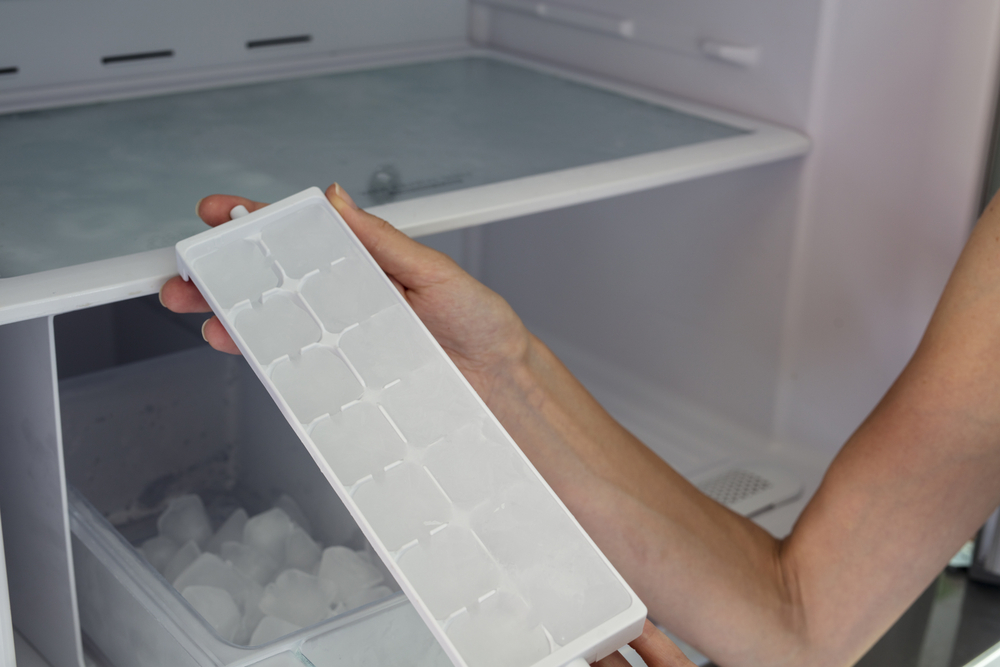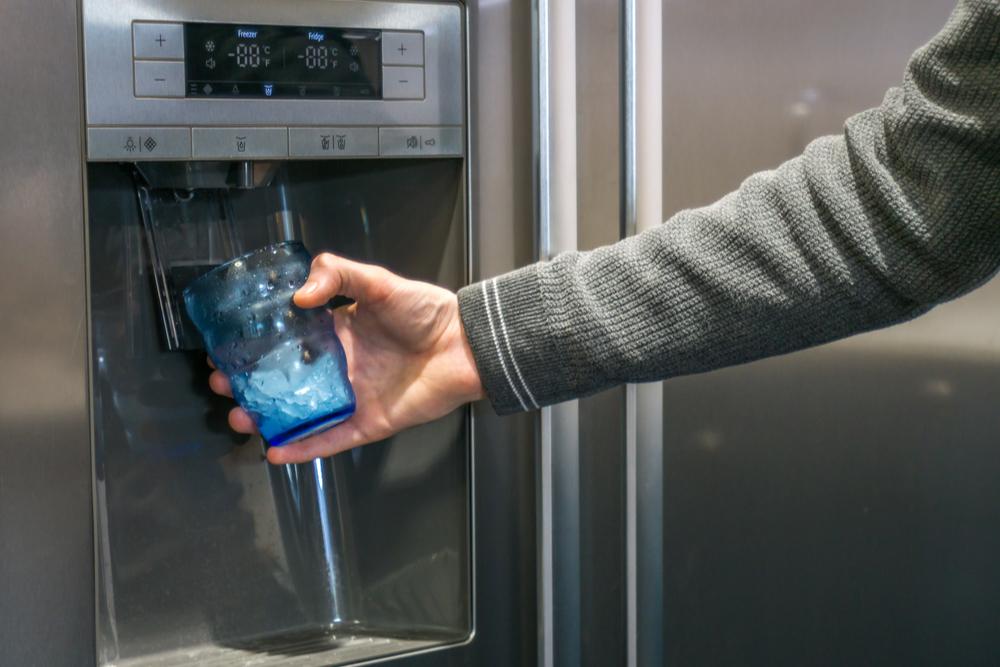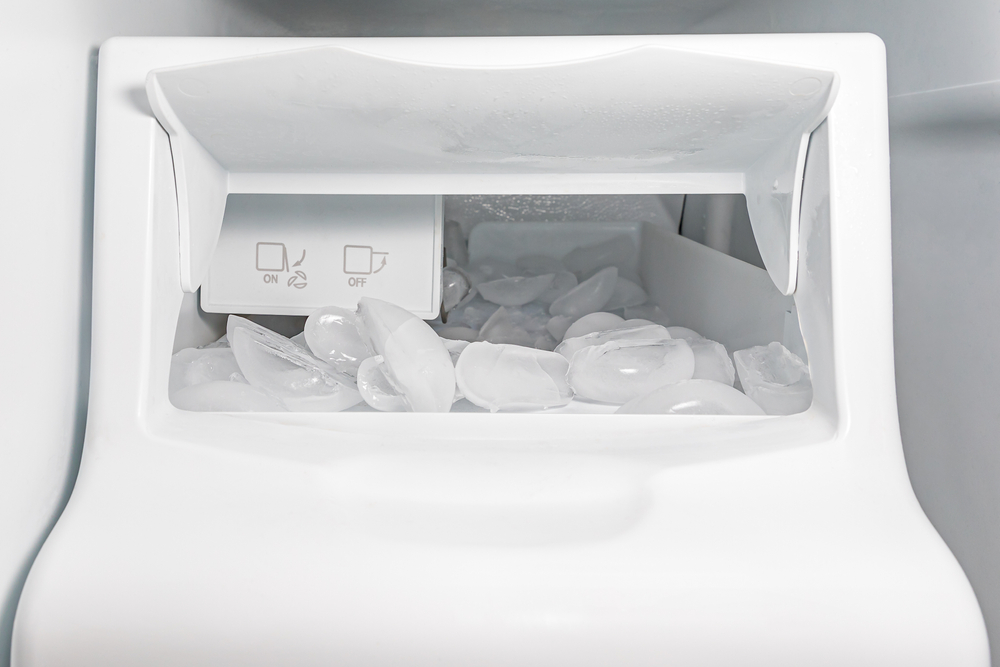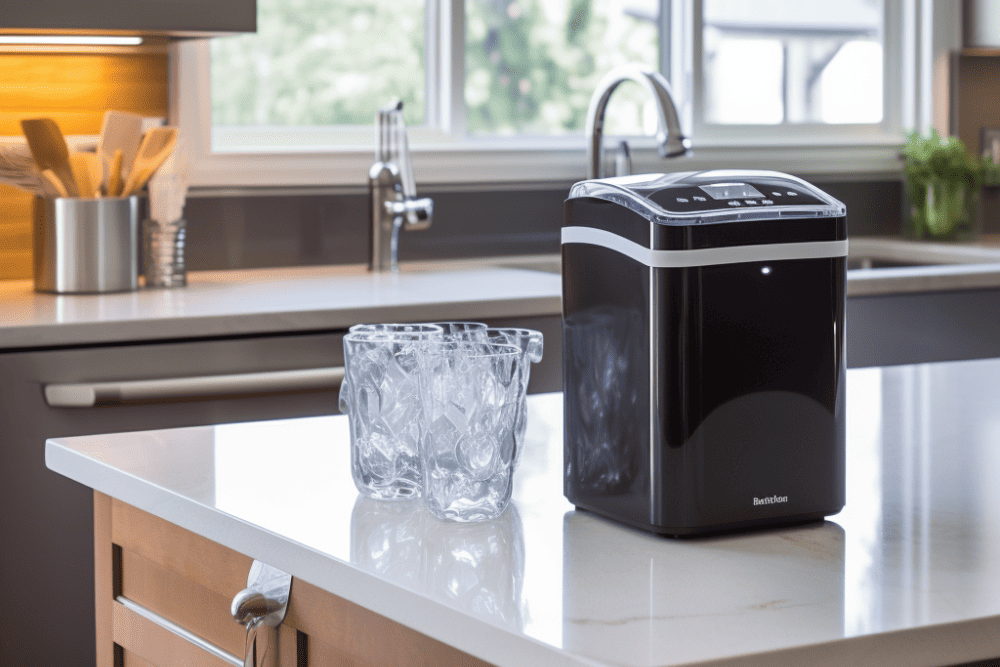It seems counterintuitive to use a refrigerator ice maker without a water line. These days, most refrigerators come with both a water dispenser and an automatic ice dispenser that require a constant connection to a water supply.
But what do you do when your ice maker water line is too short? What if your kitchen needs rearranging to connect your fridge to a water line?
You certainly don't want to deal with the ongoing hassle of pouring cold water into an ice cube tray and waiting for those cubes to form.
Some refrigerators or freezers come with their own water tank to supply their ice makers for ice production, while others have water supply line attachments.

Avoiding the Hassle of Manually Filling an Ice Cube Tray
A portable ice maker will require an entirely different set of logistics if you decide to commit to one. But the reality of restocking your ice maker without using a water line is much more straightforward than this.
This article gives you simple and quick solutions to what must feel like an overwhelming set of questions. You can also learn about its functions before installing it or learn your model fridge's mechanics.
Let’s take the stress out of your kitchen planning and get straight to easy problem-solving.
Connecting a Water Line to a Refrigerator (From This Old House)
Before you commit to making your ice maker work without a water line, let’s take a look at the pros and cons of each decision. Connecting your fridge to a water line makes it more efficient.
Most refrigerators today come with ice cube makers, so having the entire machine in working order is ideal. It’s undoubtedly the most convenient option, but that’s when everything falls into place. Like any other machine, you must always stay on top of maintenance and upkeep.

A Water Line Hookup is the Best Option for Getting Filtered Water and Ice Cubes
Disconnecting your refrigerator from a water line, or not connecting it in the first place, makes your life both easier and harder.
A water line won’t affect how well your fridge and freezer work. The only downside would be not having ice made for you automatically.
This means less setup for you to do and less maintenance to stay on top of the outside of refilling your ice maker on occasion.
But even then, removing your ice maker can be a hassle depending on your machine. And it can still be open to maintenance issues despite not being connected to a water line.
Though it may seem odd, refilling an ice maker manually is straightforward. But to understand how this works as a viable solution, let’s look at how ice makers work in general.
Automatic ice machines refill themselves automatically by filling an internal ice mold for cubes with water from the refrigerator’s water line.
The extremely cold freezer temperature gets the water will to freeze until the ice machine's sensors detect that it is ready to be emptied into the ice bin at the bottom of your ice maker.
The machine keeps doing this until the tray becomes full. When full, your icemaker will automatically stop making ice cubes until more space is available in the ice bin.

It May Be Possible to Manually Fill the Tray that Feeds Your Ice Bin
If you couldn’t already tell, most of the work is done by the ice maker itself. It only pulls from the water line when it needs to make a new batch of ice; even then, it doesn’t constantly use up water.
All you need to do is keep an eye on the ice maker’s water level and refill it as necessary, making it easier to have ice cubes ready when you need them.
When you refill the ice maker by hand, the machine should automatically finish the rest of the process by itself.
Find your ice maker in the freezer. It should be pretty easy to find just above the dispenser on your door, though it should also say ice maker on the label.
Depending on the type of fridge you own, your ice maker might have a different way to detach from another.
Press the button, pull the latch, or gently pull the tray before removing it from its position. Fill the tray up with water, set it back securely back in place, and wait for the ice to finish!
A quick and easy way to bypass a water line is by having a fridge with a built-in water tank. These refrigerators don’t connect to a water line and instead have a water tank built into them to draw water from.
You can quickly learn your fridge's water connection if you have access to your refrigerator’s manual. You can also learn about its functions before installing it or learn your model fridge's mechanics first-hand.
Built-in water tanks are about as much maintenance as refilling your ice maker manually. For a time, your ice maker will draw from the water tank to make ice until either the tank is empty or the ice tray is full.
You will need to keep an eye on your water tank’s level and refill it once the water level gets low. Depending on the model fridge you own, the water reservoir is located in different areas of the refrigerator.
Solve one ice cube maker with another ice cube maker? If you want to avoid the hassle of removing your fridge’s ice cube maker, then yes!
Portable ice cube makers work the same way as the one in your fridge, minus the water line connection. And they’re easier to monitor the water level of since most portable ice cube makers make a point of indicating this to you.
Unlike ice makers already installed in your refrigerator, you can choose to use a portable ice maker when and where you need it most.

Portable Ice Makers are Convenient and Aren't All That Expensive
And even if you use your fridge’s ice maker without a water line, you can still run into maintenance issues like leaks and excess condensation.
Portable ice makers are easy to stop using for extended periods and are less likely to run into issues than your automatic ice maker will.
Simply fill up your portable ice maker with water, and let that little machine do the rest of the work! You can find a mobile ice maker the size that you need and leave it on your counter whenever you need to use it.
Let’s take a look at some common questions related to ice makers without a water line:
A freezer can’t make ice without water. However, it can make ice with manually poured water rather than using a water line.
A storage tank is another option. You can put water into the storage tank and hook it up to your ice maker. It will then make ice until that water runs out. You can then add more water to get it going again.
Yes, you can. It takes more effort to manually put water into your ice maker instead of having a water line. However, if you do not want a water line hooked up, that is the easiest way to do it.
A non-plumbed ice maker usually draws water from a storage tank. You need to refill the storage tank yourself. You can also place water directly into the ice maker but that method requires you to do so again much more often.
